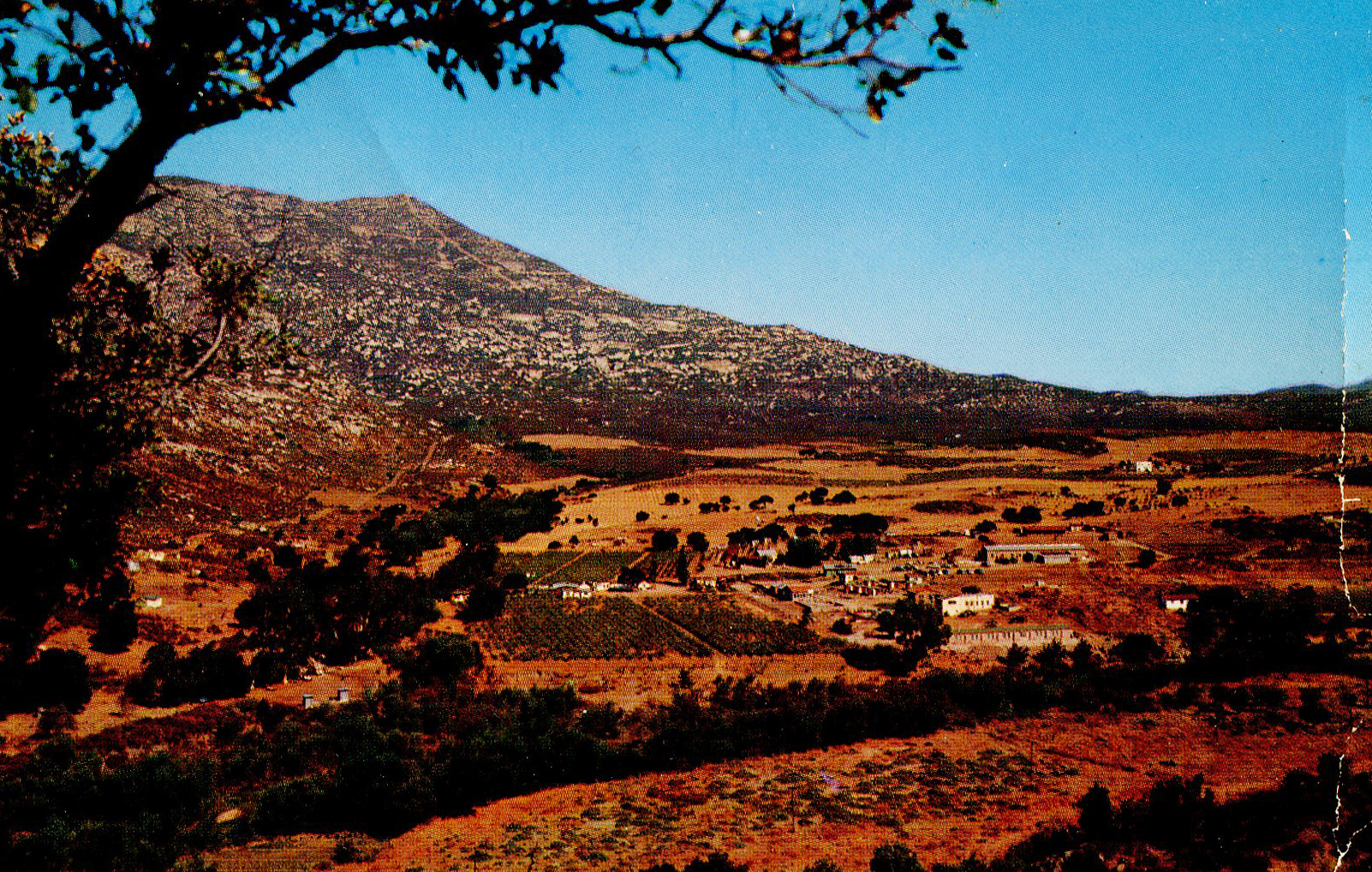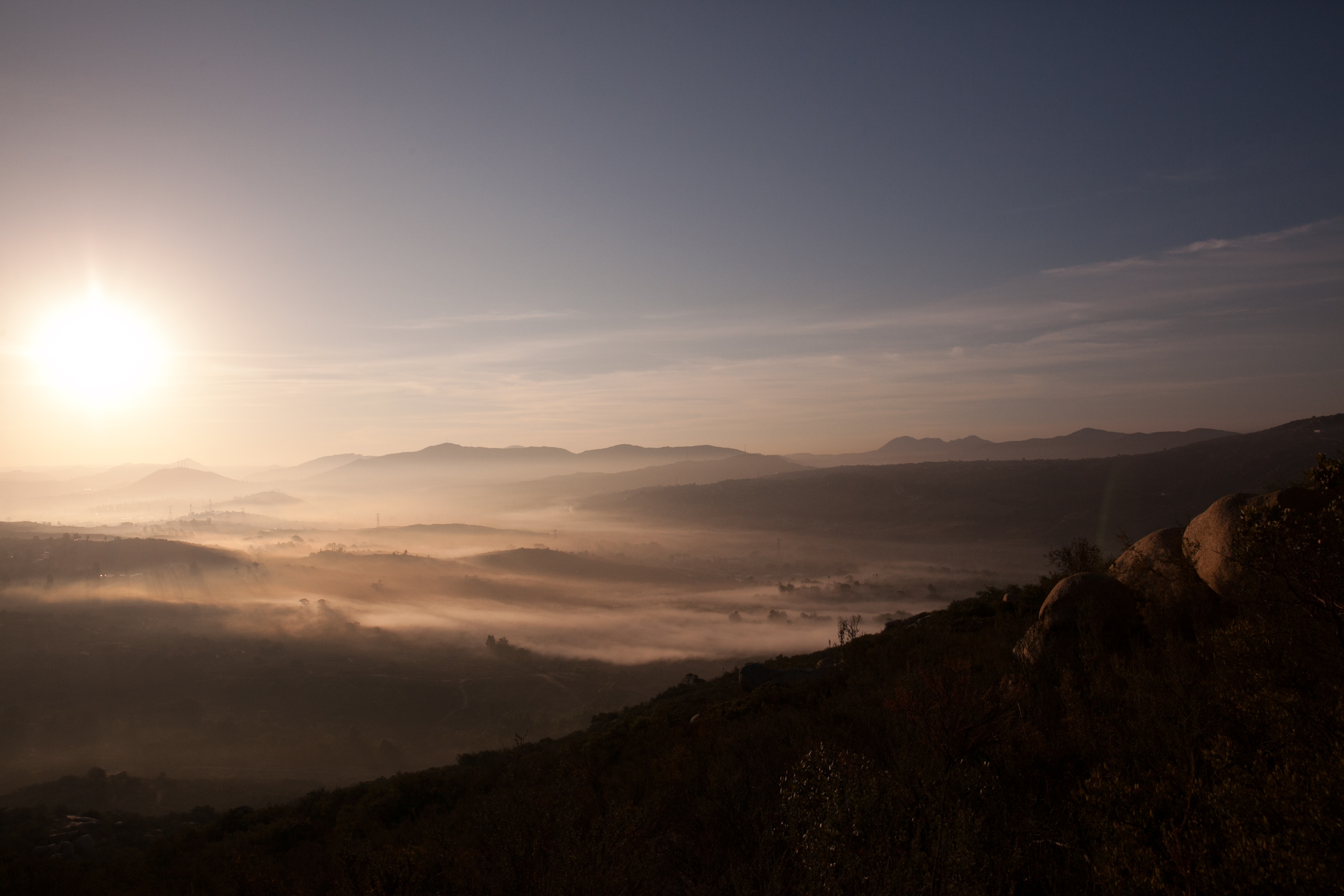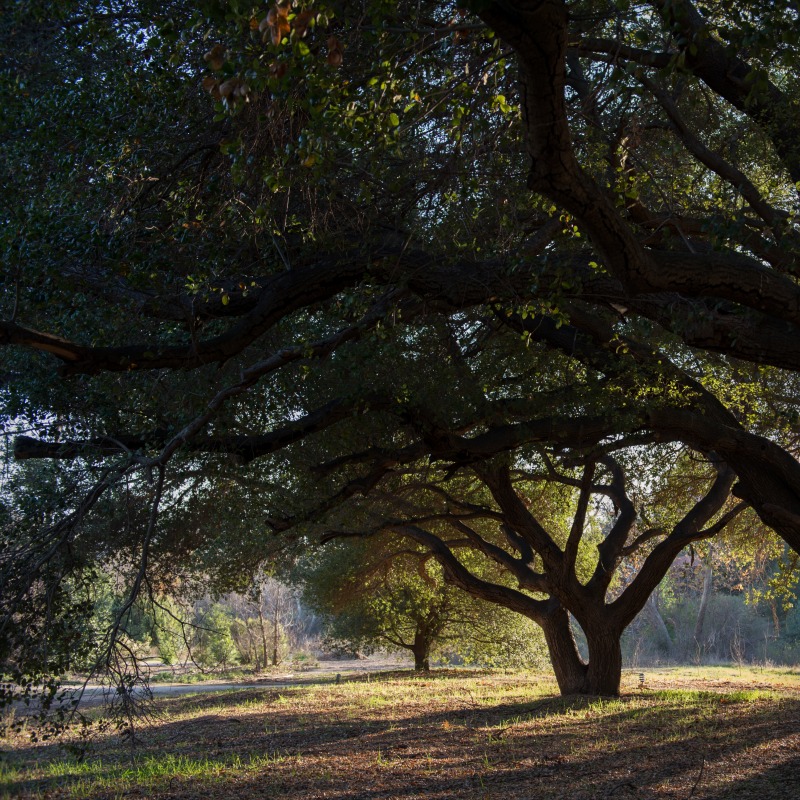Origins of the Ranch, Part XIV

A temple-like cavern lies within Mt. Kuchumaa, according to legend…and Native Americans believe that the mountain has the power to generate powerful dreams. Many guests at the Ranch report that their dreams during the week are amazing…could these legends help explain such a phenomenon when we “decompress” from the modern world?
This month we return to the story of Mt. Kuchumaa (Tecate Peak), the sacred mountain, the “Exalted High Place,” that rises above Rancho La Puerta. The peak—broad, covered with giant wind-sculpted boulders, and cloaked in the purple blooms of ceanothus each spring—had a powerful influence on the Kumeyaay who lived at its base. These bands also occupied lands in a radius of 40 miles or more into what is now northern Baja California and San Diego County. All of them knew Kuchumaa. All sent their shamans there to gain enlightenment. The following excerpts are from Kuchumaa’s National Register of Historic Places Registration Form, 1992 (U.S. Department of the Interior):
Shamans were select, special members of Kumeyaay and most other Native American cultures. These were individuals with connections to the spirit realm; people to be feared. Mrs. Robertson (a Kumeyaay elder interviewed by anthropologists in 1982) believes that kwisiyai (kumeyaay for shaman) are important because “he’s a boss to us. He’s very respected. We’re afraid because we don’t know what he can and can’t do. We just have to show him respect.”
As illustrated by Mrs. Robertson’s concerns, there was reluctance on the part of Native American informants to reveal intimate and esoteric aspects of their culture. Legends associated with Kuchumaa, for example, are special and remain known only to the Kumeyaay. “They won’t talk about it. Especially this place. They will other places but not this place.” (Some stories are known, however: see below.)
Kuchumaa is a sacred mountain where only shamans and their initiates were allowed. Also, since the mountain is sacred, discarding or disturbing the mountain’s natural state would be sacrilegious.
SOURCE OF SPIRITUAL QUALITIES
Kuchumaa became a special, sacred mountain because it was selected by the Kumeyaay god Maiha (also Maiyoha). Maiha is considered one of “the great creator gods” in Kumeyaay mythology. Few earthly places received this personal attention.
…All was salt water in the beginning. In the water there were two deities Maiyoha and his younger brother…the earth was made by Maiyoha…Maiyoha, the one who stayed on earth, felt sad over his younger brother leaving him. He then made a man and a woman from clay…All people sprang from this pair…the god watched the image during the night. Toward morning he thought he heard them talking. At daybreak he said to himself, “I believe that I have accomplished a great undertaking. There is no need of my remaining here. Since I have done so excellently, I may as well go up into the sky.”…As he departed to the sky he said, “I have made everything: the earth, the sun, the moon, the people.”
In addition to Maiha, other spirits are linked with Tecate Peak. There is a temple-like cavern within the mountain, according to informants interviewed in 1981. This was substantiated by Mrs. Robertson, who indicated that the house inside Kuchumaa is inhabited by a spirit who is responsible for giving people their dreams. In quoting her late uncle, a shaman himself, Mrs. Robertson states, “…he said it’s so true, so real, how else would I have known those songs? It’s there that I saw them.” The spirit house inside the mountain makes Kuchumaa unique.
INITIATION
The mountain played an important role in the shaman’s initiation ceremony. No other place is known to exist in traditional Kumeyaay territory where these were conducted. Special rites were performed at the summit.
…As the young men of the tribes tributary to Kuchumaa approached manhood, after having undergone the preliminary initiation of earlier boyhood, singly and solitarily, one by one in turn, when the tribal elders had prepared them, they went on pilgrimage to the summit of “The Exalted High Place” to choose their lot in life.
Shaman initiation was an important and integral part in becoming a kwisiyai. Very few people were considered shaman at birth and an initiation was necessary in order to acquire knowledge and acceptance as a kwisiyai. Individuals indicated that they had shamanistic capabilities through revelation of their dreams. Practicing kwisiyai also helped select individuals with good “health, intelligence, sense, energy, and abundant sexuality.”
The actual ceremony was preceded by a year of training. During this period initiates received instruction regarding the
…diagnosis of disease, curing methods, dream interpretation, tribal and professional ethics, star lore, spirit communication, hunting secrets, witching songs, and how to prepare magic to insure success at gambling and love.
Initiates culminated a period of fasting, purifications, and meditation with the inducement of visions, often brought about by the drinking of hallucinogenic datura. While in either a trance or dream state, candidates “learn of their animal guardian, and receive certain songs, cures, knowledge, a sexual name, and magical paraphernalia.” …Throughout California, datura was incorporated into Native American religious structure since it generated visions and facilitated “acquisition of power from sources accessible only in altered states of consciousness.”
Speaking of “altered states of consciousness, Aldous Huxley, author of “The Doors of Perception,” 1954, was a frequent guest at Rancho La Puerta in the 1950s. The book recounted Huxley’s experience with mescaline on May 3, 1952, at his house in West Hollywood. Huxley’s “doors” reference does not apply to Rancho La Puerta (Ranch of the Door): it is a coincidence. He took the book’s title from a phrase in William Blake’s poem The Marriage of Heaven and Hell:
“If the doors of perception were cleansed everything would appear to man as it is, infinite. For man has closed himself up, till he sees all things through narrow chinks of his cavern.”
Next month: More on shamans and the mountain, and the beginning of the modern era.


